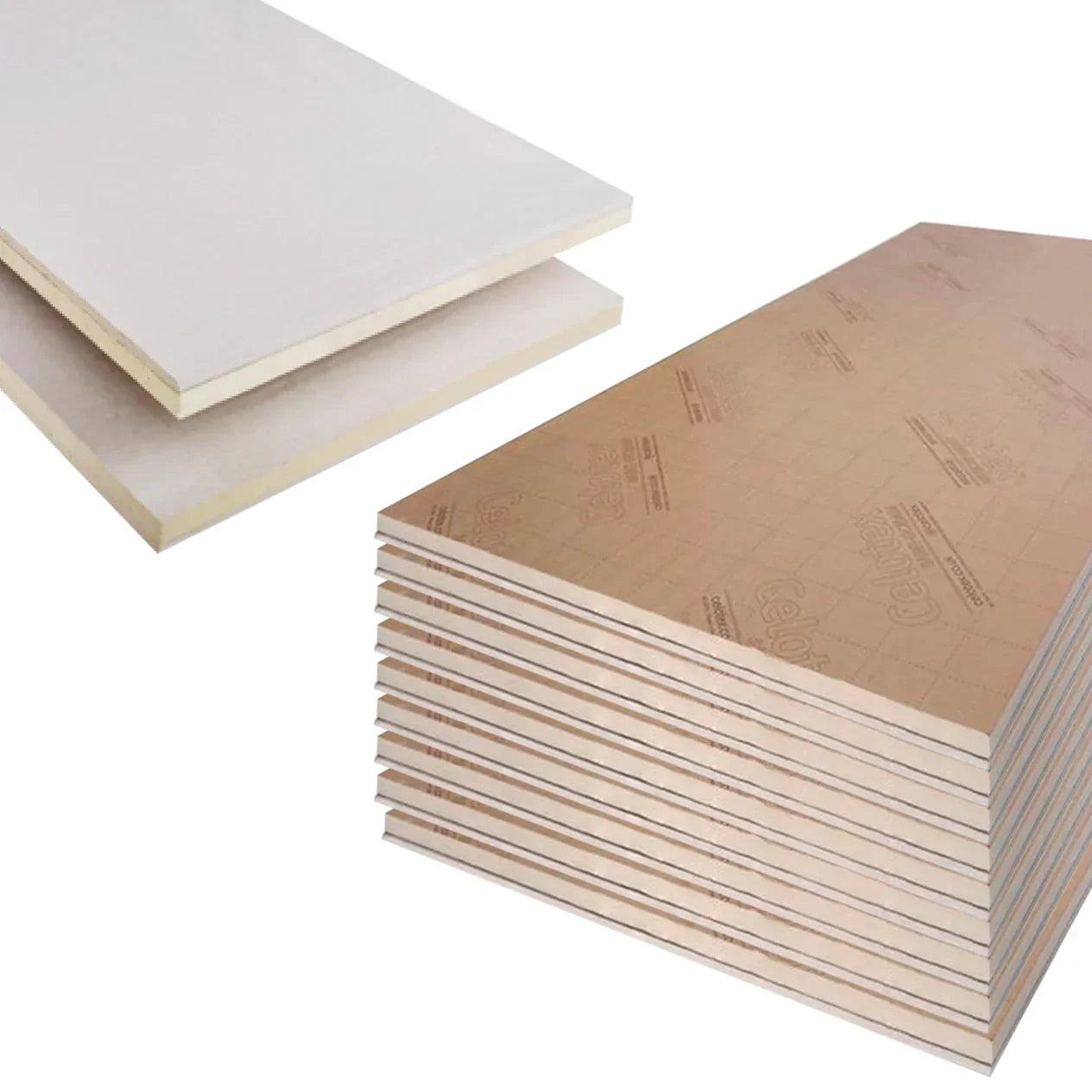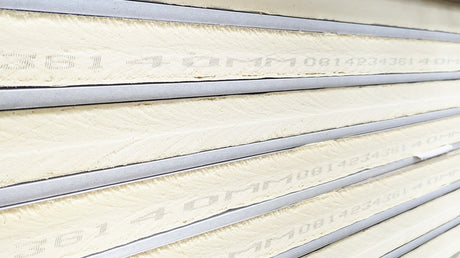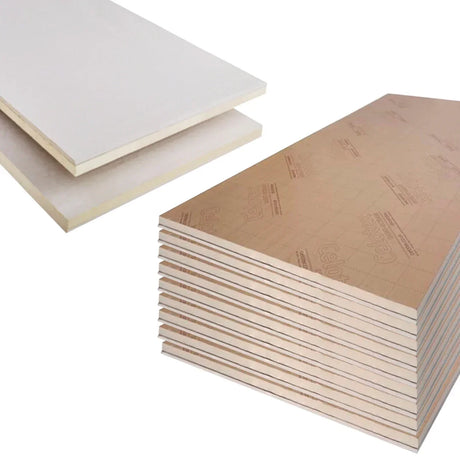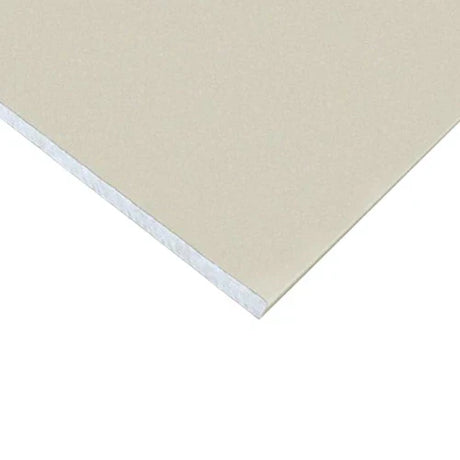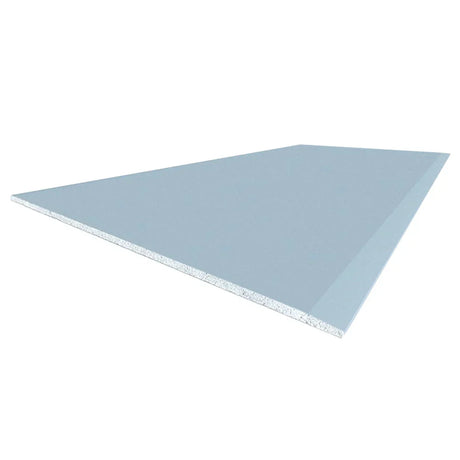When you're planning a home improvement project, you've probably heard about insulated plasterboard and its brilliant thermal properties. But here's a question we hear all the time at DIY Building Supplies: "Will it actually help with noise too?" If you're new to this topic, you're not alone in wondering whether this material can solve two problems at once.
Whether you're a homeowner planning your first loft conversion, a tradesperson exploring new solutions for clients, or a DIY enthusiast researching your weekend project, understanding how this material affects sound is crucial. Let's explore what you can realistically expect when it comes to noise reduction.
What Exactly Is This Material?
Before we dive into the noise question, let's start with the basics. Think of it as a clever two-in-one product: traditional plasterboard bonded together with an insulation layer. The insulation core is typically made from materials like expanded polystyrene (EPS), polyisocyanurate (PIR), or phenolic foam.
Leading UK manufacturers like Celotex, Knauf, and Kingspan have spent years perfecting these products. At DIY Building Supplies, we've watched this technology transform how people approach renovation projects. Instead of installing separate insulation and then fixing plasterboard over the top, you're getting both in a single board that's ready to install.
How It's Put Together
If you're completely new to building materials, here's what you're actually getting:
A face layer of plasterboard (usually 12.5mm or 15mm thick) bonded to an insulation core that can range from 25mm to 100mm thick. Some products also include a vapour control layer, which helps manage moisture in your walls. The beauty of this design is that it behaves like normal plasterboard when you're cutting and fixing it, but delivers the thermal performance of a fully insulated wall.
The Big Question: Does It Actually Reduce Noise?
Here's the honest answer: yes, it does reduce noise, but probably not as much as you're hoping for. This isn't a magic solution that will turn your noisy house into a peaceful sanctuary. However, it does offer some acoustic benefits alongside its primary job of keeping your home warm.
Understanding How Sound Moves
If you're new to thinking about acoustics, it helps to understand that sound travels in two main ways through your home:
Airborne sound floats through the air and passes through walls, gaps, and lightweight materials. This includes conversations from the next room, television noise, or music from your teenager's bedroom.
Impact sound happens when something physically strikes a surface. Think footsteps from the room above, doors closing, or furniture being moved around.
The material we're discussing primarily affects airborne sound transmission. It does this through a combination of its mass (heavier materials block sound better) and the properties of its insulation core.
What Results Can You Actually Expect?
Setting Realistic Goals
When customers visit DIY Building Supplies, we always emphasise managing expectations. A wall built with these thermal boards typically achieves sound reduction of around 35-42 decibels, compared to 28-35 decibels for standard plasterboard of similar thickness.
What does this mean in practical terms? Imagine conversations in the next room: with standard plasterboard, you might hear them quite clearly. With thermal plasterboard, those same conversations become muffled and harder to understand. You'll notice the difference, but you won't have complete silence.
What Influences Performance?
Several factors determine how well your walls will block sound:
The Type of Insulation Core: This is where material choice really matters. Mineral wool cores, like those in some Knauf products, offer better sound absorption than rigid foam alternatives. The fibrous, open structure of mineral wool naturally dampens sound waves, whilst closed-cell foams primarily provide thermal benefits.
Thickness Matters (But Not as Much as You'd Think): Moving from 50mm to 100mm thickness might only give you an additional 3-5 decibels of sound reduction. It helps, but it's not a dramatic transformation.
Installation Quality Is Everything: Even the best materials can't perform if they're poorly installed. Gaps around edges, poorly sealed junctions, and inadequate fixing all compromise acoustic performance significantly.
Comparing Your Options
When This Solution Makes Perfect Sense
Insulated plasterboard excels when you need to solve two problems with one product. It's particularly valuable for:
Loft conversions where you're battling heat loss and want some noise reduction from adjacent rooms. External wall projects where reducing traffic noise is a bonus alongside improved thermal efficiency. Renovation projects where space is tight and you can't afford the depth of separate insulation and acoustic treatments. Budget-conscious projects where addressing multiple needs with one material offers better value than buying specialist products for each requirement.
At DIY Building Supplies, we've helped hundreds of customers navigate these decisions. Our experience shows that understanding your priorities makes all the difference in achieving satisfaction with your project outcomes.
When You Need Something More Powerful
If noise is your main concern rather than heat loss, you'll want to consider dedicated acoustic solutions. Manufacturers like British Gypsum produce specialist acoustic plasterboard systems achieving sound reduction ratings of 50+ decibels through sophisticated construction techniques.
These premium systems feature higher density boards (typically 15kg per square metre versus 8-10kg for standard), specialist acoustic mineral wool, resilient mounting systems that break sound transmission paths, and advanced sealing details at junctions.
Getting Installation Right
The Details That Make or Break Performance
Here's something we've learned from years of supplying building materials: even premium products disappoint when installation isn't up to scratch. Sound is persistent and will find the weakest point in your construction.
Sealing Every Gap
Sound travels through the tiniest gaps, so comprehensive sealing is essential. You'll need acoustic sealant (not standard decorating caulk) around all perimeter edges, service penetrations, and junctions between different building elements. This seemingly small detail can make a 10-15 decibel difference in final performance.
Following Fixing Guidelines
Each manufacturer provides specific fixing patterns for their products. Follow these precisely. Over-fixing creates additional sound transmission paths through the boards, whilst under-fixing compromises the system's integrity. We stock compatible fixings from leading manufacturers to ensure your installation performs as intended.
Planning for Services
Electrical cables, plumbing pipes, and other services create acoustic weak points. Careful planning of service routes and proper sealing around all penetrations maintains your wall's performance. It's worth spending extra time on these details rather than compromising your overall results.
UK Products Worth Considering
What's Available from Trusted Manufacturers
Celotex Thermal Line Products: Offering PIR-cored boards in thicknesses from 27.5mm to 92.5mm. Whilst primarily designed for thermal performance, they provide measurable acoustic improvement over standard constructions.
Knauf Insulation Systems: Their mineral wool-cored options deliver superior acoustic performance compared to foam alternatives. The Drywall range includes products specifically designed for projects where both thermal and acoustic properties matter.
Kingspan Kooltherm Range: Featuring phenolic foam cores with excellent thermal properties and reasonable acoustic performance. Their K118 range offers integrated solutions suitable for various applications.
Each manufacturer provides detailed technical specifications covering both thermal and acoustic characteristics. At DIY Building Supplies, our team can help you interpret these specifications and select the most appropriate product for your specific requirements.
Does the Cost Make Sense?
Understanding the Investment
Thermal plasterboard typically costs £3-8 more per square metre than standard alternatives, depending on thickness and specification. However, consider what you're saving: separate insulation materials, additional labour for two-stage installation, and the complexity of coordinating different trades.
For many projects, the overall economics favour these integrated solutions. You're addressing thermal performance (which saves energy bills long-term) whilst gaining modest acoustic improvements as a bonus.
Weighing Performance Against Price
If noise reduction is your absolute priority, the additional investment in dedicated acoustic systems will deliver better results. However, if you're primarily focused on thermal efficiency with acoustic improvement as a secondary benefit, this material offers excellent value for money.
Making Your Decision
At DIY Building Supplies, we help customers think through their specific circumstances before committing to materials. Our technical team can provide performance data and practical advice based on your project's unique requirements.
Questions Worth Considering
Is thermal performance equally important as noise reduction in your project? What level of sound blocking do you genuinely need to achieve your comfort goals? Are there space constraints favouring integrated solutions over separate systems? Does your budget stretch to dedicated acoustic treatments if noise is the primary concern?
Should You Tackle Installation Yourself?
Whilst fixing these boards follows similar principles to standard plasterboard, achieving optimal acoustic performance demands attention to detail. Poor installation can negate much of the potential benefit you're paying for.
For projects where sound reduction matters, consider professional installation or invest serious time understanding proper sealing techniques and junction details. We provide comprehensive technical support and can recommend experienced installers across the UK if you prefer that route.
The Bottom Line
So, will insulated plasterboard reduce noise in your room? Yes, it will—but it's important to understand what "reduce" actually means. You'll get measurable improvement that makes a noticeable difference to everyday comfort, particularly with conversational noise and general household sounds.
However, if you're battling serious noise issues—loud neighbours, heavy traffic, or industrial noise—you'll need dedicated acoustic solutions to achieve satisfactory results. The thermal boards we've discussed offer excellent value when you need both thermal efficiency and moderate acoustic enhancement.
At DIY Building Supplies, we're committed to helping you make informed decisions based on realistic expectations and your specific needs. Our technical team combines extensive practical experience with detailed product knowledge across all major UK manufacturers. We've built our reputation on honest advice that prioritises your project's success over simply making a sale.
Contact our team to discuss your project requirements. We'll help you evaluate whether this solution meets your needs or guide you towards alternatives that better suit your circumstances. With our comprehensive support services, from initial specification through to installation guidance, we ensure you achieve optimal outcomes for your investment.

